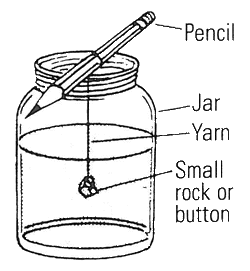
The Coati (co-AH-tee) is a relative of the raccoon with a long nose, masked face, and a striped tail. Coatis are curious and energetic, just like kids!
Coati Club News, January, 2014
It's January, Gem and Mineral Show season, and the Desert Museum is gearing up with its Mineral Madness Family Events and Mineral Sale, Saturday & Sunday, January 18 & 19, 2014. All Coati Club members are welcome to attend, of course. And even if you can't make the event, you can rock out next time you come to the Museum.
Can you believe it? The Coati Kids Club is turning 20 this year! We'll be having a big birthday event on November 22nd. Till then, we want to hear from old Coati Club members. What are you doing now? How did the Coati Club impact you? Please contact Robin Kropp at rkropp@desertmuseum.org so we can be in touch with you!
Mucking Around in the Mine Dump
If you've visited the Desert Museum, you've probably seen our mine dump. When you exit our cave's mineral gallery, you walk through a mine tunnel made from real mine timbers from Bisbee. The dump is outside, at the base of a piece of machinery called a muckloader or mucker. Our mucker used to go into a mine after a blast and scoop up tons of broken rock. It came from a real mine and was working when we got it 35 years ago.
All around the mucker is the dump... and there is really good stuff in it! You're always welcome to crawl around in it and choose one or two small pieces to take home. You might find azurite, malachite, pyrite, quartz, calcite, or fluorite. There is a sign in the dump that helps you identify some of the minerals you find there. Our dump never runs out of minerals because we "salt" it. Every morning, we scatter some new minerals around for people like you to find. Where do we get the minerals? We go collect them from the dumps of copper mines in southern Arizona and New Mexico. The mine owners invite us to do this. Sometimes, mineral dealers or collectors give us minerals to use, too. Have fun mucking!
Are you a Rock Hound?
- Do you pick up a rock because you like its color?
- Do you pick it up because you like its shape?
- Do you like it because it glitters?
- Do you put the rock in your pocket, take it home, and add it to a collection?
If you answered "yes", you are on your way to being a rock hound. It's lots of fun to look for rocks wherever you may be. Rocks are made from one or more materials called minerals, and minerals are made from non-living chemicals found naturally on Earth. All sorts of minerals, about 2,000 kinds, are found in the Earth's crust.
The rocks and minerals in our mine dump are generally found in the Sonoran Desert region. Print out this Mystery Mineral Word Search and try to find these eight common minerals: malachite, azurite, quartz, calcite, gypsum, olivine, pyrite, and chrysocolla. The words are forward or down. Draw a line around each word as you find it and list it in the spaces below. Then arrange the circled letters to spell the mystery mineral. (Hint, it is the state mineral of Arizona.)
Do you want to start a mineral collection? Check out the Smithsonian's website for some great tips! And come to our Mineral Madness event to get free minerals at the activity stations around the grounds!

How to Grow a Crystal: An Experiment to Try
Deep inside the earth, it is so hot that the minerals in the rocks melt! This melted material is called magma. When the magma cools, the minerals begin to form crystals. Different crystals have different shapes. A crystal grows by adding layers of its mineral to the surface. Would you like to see a crystal grow? Here's what to do: (You will probably need an adult to help you.)
- Get a pint jar and fill it about 2/3 full of hot water. Slowly add salt, stirring until it dissolves. Keep adding salt and stirring until you see undissolved particles of salt in the water. (Rock salt or kosher salt works the best.)
- Loop a piece of yarn through a button, or around a small rock, and tie it. Tie the other end of the yarn around a pencil. Place the pencil across the top of the jar so the button or rock hangs in the salt water. Place the jar in a place where it won't be disturbed but where you can watch it.
- Check your experiment often. As the water cools, salt crystals should grow on the yarn. Be patient. It may take a day or two.
For more safe and fun crystal growing experiments you can do at home, check out this link:
http://chemistry.about.com/od/crystalsforkids/












